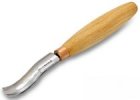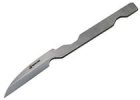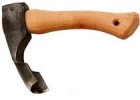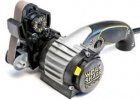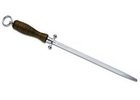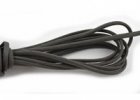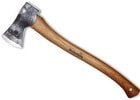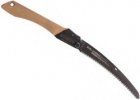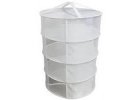A wood carving chisel is a specialized tool used for carving and shaping wood. Wood carving chisels have a blade with a sharp edge. Wood carver can use a force of his hands or struck chisel with mallet to make cuts. Chisels are an essential tool for wood carvers, and are used to create sculptures, reliefs, decorative pieces, and functional objects from wood.
Chisels come in a huge variety of shapes and sizes, each designed for a specific purpose such as making straight cuts, curves, detailed work and many other specific applications.
Wood carving chisels may be split into three main categories – chisels, gouges and V-tools.
Chisels vs. gouges – what is the difference?
Terms chisel and gouge are commonly misinterpreted and sometimes used interchangeably. You might easily get confused when reading various sources. Everywhere is the definition different. The difference between a chisel and a gouge is that chisel has straight cutting edge and gouge has a curved cutting edge. Chisels are used for making straight cuts or shaping flat surfaces, while gouges are used for making curves, grooves, or creating channels in a wood.
Based on the cutting edge shape
Flat chisels
Flat chisel has cutting edge with a rectangular shape. Flat cutting edge is used for making straight cuts and creating flat surfaces. It is basic, must-have tool for every woodcarver. Flat woodcarving chisels are categorized as sweep #1 and are available in widths from 2 mm up to 50 mm (sometimes even 70 mm).
.jpg)
Skew chisels
Skew woodcarving chisels are very similar to flat chisels. However, their cutting edge is skewed or angled usually at 45° or 60°. Skew chisels easily fits into tight corners, that #1 flat chisel can’t reach. Double bevel skew chisel is a preferred option for most wood carvers – one tool can be used on both sides. If you prefer single bevel, you will need two skew chisels – left-sided and right-sided. Skew chisels are categorized as sweep #2.

Gouges
Gouges are widely utilized woodcarving tools. Cutting edge is curved with varying depths, allowing them to remove large portions of wood. Woodcarving gouge is commonly used to carve out the rough shape of the workpiece before proceeding to finer details. It removes excess wood very quickly. Gouges are categorized as sweep #3 - #11. Lower number means less curved edge, higher number means more curved edge. Gouge #3 being the most shallow, while #11 being the most curved U-shaped gouge. Gouge #11 is also called a veiner.

V-tools
V-shaped chisels are used for carving grooves, to separate areas when doing letter-work, outlining or detailing. Wood carving V-tools are usually available in angles 30, 45, 60, 75, 90 or 100 degrees. The narrower the V angle, the more effort carver needs to cut through the wood. It is mainly noticeable for angles 30° – 60°. Manufacturers use different classification for V chisels. For example Pfeil categorize its V-tools as #12 - #16, Narex use #41 - #49, Kirschen use #39 - #45.

Macaroni, Fluteroni
Macaroni tool is kind of squared gouge with 90° angle. Macaroni has 3 edges and is used as combination of chisel and V-tool.
Fluteroni tool shape falls somewhere between macaroni and a gouge. It has 3 edges.
Based on the shape of the blade
Straight chisels and gouges
Those tools have straight blade and are often used for general woodworking tasks, such as shaping, flattening or trimming wood.

Bent chisels and gouges
Sometimes called also “long bent chisels”. Bent chisels have a bent blade that allows them to cut in recesses and curves. Very useful for carving things such as bowl, spoon or kuksa.

Spoon chisels and gouges
Sometimes called also “short bent chisels”. Ideal tool for scooping out wood from tight curved spaces. If you can’t reach tight space with straight or bent chisel a spoon chisel might be the best choice. Spoon chisel sweep 1 has flat edge. Spoon gouges with sweep 2 - 11 have curved edge. V-shaped spoon chisels usually comes in angles 45°, 60°, and 90°.

Reverse bent chisels and gouges
Special tools for carving convex surfaces that are difficult to reach. Usually available with flat or curved cutting edge.
Dog leg chisels
Dog leg chisels have a bent shank with 90-degree, which provides better leverage and control when working at awkward angles or in tight spaces.

Fishtail chisels and gouges
Fishtail tools have a cutting blade that widens at the end to form a fishtail shape. This allows for easier access to tight corners and other hard-to-reach areas

Double bevel vs. Single bevel
When carving with double-beveled chisel you can use it with either side up or down. The carving effect will be the same. On the other hand, single-beveled chisel draws into wood when bevel is up. When bevel is down, single-beveled chisel create a very flat surface.
Whether to use a single or double beveled chisel ultimately depends on the personal preference of the wood carver. Some prefer the versatility of the double-beveled chisel, while others may prefer the control and precision of a single-beveled chisel.
Size of wood carving chisel
The size of a chisel refers to the length and width of the blade. Chisels come in a range of sizes, from small, delicate chisels for intricate work to large, heavy-duty chisels for rough work. Width of the cutting edge can vary from 0.5 mm up to 70 mm.
.png)









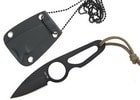





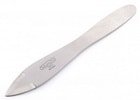










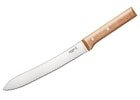
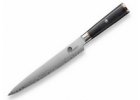

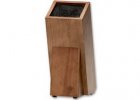



-min.jpg)









